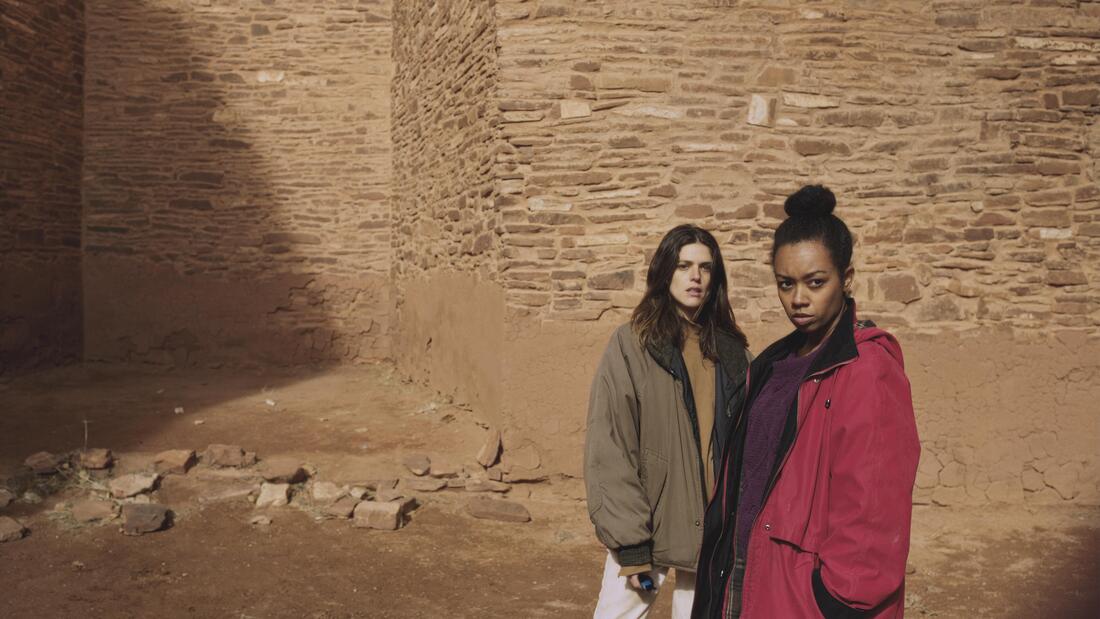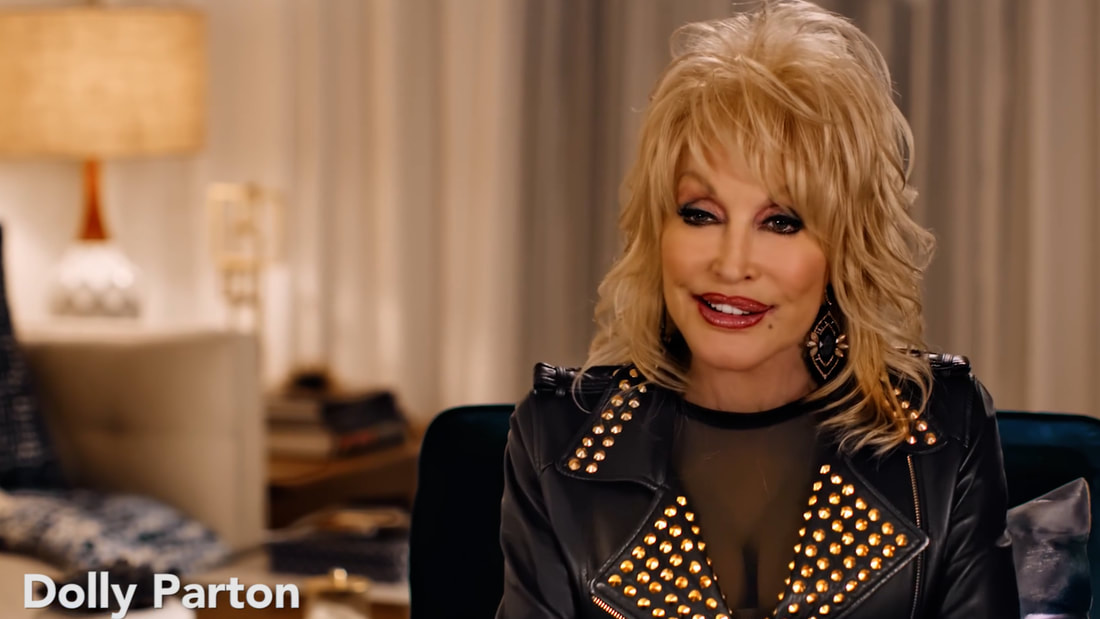|
By Sean Boelman
Returning in-person to Austin better than ever, the SXSW Film Festival is again bringing cinephiles a showcase of some of the most exciting and subversive films that the year has to offer. For those who have been missing the feeling of community for the past two years, this will be a happy reunion, but for those who aren’t able to make it out to the live event will still have the opportunity to participate via some online offerings.
We at disappointment media are covering the SXSW Film Festival again from home, and we will be reporting to you on what we have had the chance to see in the lineup. Below you will find some of our quick thoughts on some of what we have seen, and we will be updating this article throughout the fest, so be sure to check back in! Split at the Root
Linda Goldstein Knowlton’s documentary Split at the Root explores a very important issue: immigrant families being separated under the Zero Tolerance Policy. And while the film explores these issues in a way that highlights the urgency of the situation, there are some issues with its presentation. Although it is understandable why the filmmakers wanted to focus on the people bringing about change on this front, it comes dangerously close to coming across as white saviorism.
32 Sounds
Documentarian Sam Green’s new film 32 Sounds debuted at Sundance earlier this year and is now making its way to SXSW. However, this was not envisioned as merely a film — there is also an in-person experience that augments the film with live performance elements. It’s unfortunate that the COVID-19 pandemic has prevented most audiences from experiencing the latter, but Green’s exploration of sound is still fascinating and something you have to behold. It’s definitely a tad on the pretentious side, but it’s observations are strong enough to justify it.
Bad Axe
The SXSW Film Festival Documentary Feature Competition often features a film that will be very important in the long run, and David Siev’s Bad Axe is that film this year. Exploring a community in rural Michigan, the film is at once an exploration of the COVID-19 pandemic, generational trauma, and the Black Lives Matter movement. It’s a lot to juggle, and at times, first-time director Siev struggles to tell all of these stories, but the result is mostly affecting.
We Feed People
For some reason, filmmaker Ron Howard’s documentaries tend to be much more consistent in quality than his narrative films. We Feed People, his portrait of the activism of celebrity chef José Andrés, is yet another good documentary from him. Those hoping for this to be a standard cooking documentary are going to be disappointed, because there isn’t much of a focus on the food itself, but it is a moving portrait of the difference that people can make if they dedicate themselves to change.
Jazz Fest: A New Orleans Story
Despite what the title may imply, Jazz Fest: A New Orleans Story isn’t really about jazz… nor does it go too heavy on the Big Easy. Just as the eponymous music festival has evolved over the years to become something more mainstream from how it started, this documentary appeals to the masses. Yes, it’s a good film in many ways, with great music and a celebration of the culture that led to Jazz Fest exploding as it did. Still, the film doesn’t escape the feeling of being a glorified promotional video to attract new attendees to the festival.
Hypochondriac
Addison Heimann’s Hypochondriac is the type of movie where you can admire what it was obviously trying to be, even if it doesn’t always work for what it is. The film deserves some points for being an unabashedly gay genre picture, something which there isn’t enough of, even these days, but the execution is messy. The first half of the film and the second half of the film don’t really mesh together, as when the film goes from being slightly tongue-in-cheek in the beginning to being more of a straightforward horror picture for the remainder of the runtime, it loses most of its steam.
Millie Lies Low
Michelle Savill’s Millie Lies Low is the rare film that manages to take two very different tones and balance them extraordinarily well. It works as both an awkward comedy and an uncomfortable race-against-the-clock thriller. Ana Scotney’s performance as the titular character is extremely strong, giving the film a majority of its emotional resonance. For those who experience any form of anxiety themselves, Millie’s struggle is not only going to be extremely sympathetic, but entirely contagious.
Soft & Quiet
When Jason Blum boards something that isn’t outright horror, you know that it’s something to be excited about. And so when he was announced to be joining as a producer on the real-time thriller Soft & Quiet shortly before the beginning of the festival, it immediately became one of the most intriguing films in the lineup. Lo and behold, it’s an absolutely riveting watch, with a depiction of white supremacy that is disgusting in all the right ways. It’s the type of film that will stick with you long after the credits roll.
Jethica
Pete Ohs’s Jethica is a true rarity in the major festivals these days — a truly independent film. You would expect a film like this with a budget of about $100,000 to pop up at something like Slamdance or perhaps a genre festival, but the fact that it got a major platform like SXSW is impressive in and of itself. While the film shows its budget at several points, and even occasionally looks outright cheap, there is something undeniably charming about its style that makes it a cult classic waiting to happen.
Diamond Hands: The Legend of WallStreetBets
The GameStop stock situation is without a doubt one of the most bizarre things to happen in the history of the stock market, and so it’s definitely the type of story that would make a fascinating documentary. Diamond Hands: The Legend of WallStreetBets interviews the retail investors who played an integral role in the historical surge of the company’s stock prices along with the Wall Street insiders who were caught so off-guard by this unprecedented movement. But these events also pulled back the curtain on an issue in the system that threatens our financial freedom as individuals, and this film explores that well.
The Thief Collector
In her documentary The Thief Collector, Allison Otto explores one of the most unusual mysteries that shook the art world. It’s an art heist that feels like it is pulled out of the movies because of how simply outrageous it is. And yet, the film still falls victim to the same flaw that a majority of art-centric documentaries have: the talking head interviews just aren’t that interesting. No matter how many ridiculous twists and turns the story takes, it will be hard to keep the audience interested in these people talking about art in a very dry way.
Still Working 9 to 5
Camille Hardman and Gary Lane’s documentary Still Working 9 to 5 explores both the making of the eponymous hit 1980 film and the context in which it is made. It’s a film that is sure to be of interest to cinephiles, because it tells one of the best underdog stories in the film industry, but it also explores the very real issue of gender parity. And in discussing the ways in which these issues are still prevalent over 40 years later, the film is a call to action that audiences need to see.
Deadstream
Co-writer/co-director/star Jason Winter is a lot of what makes the horror-comedy Deadstream work. As a parody of a specific type of viral video, it’s quite funny, even if its humor is derived more from basic gags than insightful satire. But it’s also just a solidly-crafted horror flick in its own right. In terms of found footage movies, it’s on the upper end, with a narrative device that makes sense and a style that isn’t overwhelming. Plus, the make-up work here is exceptional, featuring a handful of really impressive monsters.
Sissy
Acquired by Shudder shortly before the start of the festival, Hannah Barlow and Kane Senes’s Sissy is a confused film. Part social media satire and part slasher flick, the film can be divided pretty clearly into two halves, neither of which works particularly well. The film follows two childhood best friends who reunite after a decade apart, leading them to a trip together in a remote cabin where some long-dormant tensions arise again. And if the tonal issues weren’t enough, the film is sunk by the fact that the characters aren’t likable whatsoever.
This Much I Know To Be True
Filmmaker Andrew Dominik and musician Nick Cave’s previous concert film collaboration, One More Time With Feeling, was met with widespread acclaim, and their newest outing, This Much I Know To Be True, will be received with equal warmth. Poetic and beautiful, this isn’t going to be a film for audiences who can’t get behind Cave’s idiosyncratic musical style, but those who appreciate his unique brand will be absolutely enthralled. It definitely meanders a bit, but its observations are so profound that it works.
Self-Portrait
Several documentaries have used footage in a very abstract sense with little in the way of a traditional narrative, but are still compelling nevertheless. Joële Walinga’s Self-Portrait will not join those ranks, as this mosaic of surveillance camera footage taken over the past four years is not all that interesting. Supposedly offering a peek deep inside the hearts of humanity and an exploration of the things that we value, there are some thematic threads here about connection and greed, but they don’t develop into anything that is insightful beyond the level of a college-level sociology course.
Pirates
Reggie Yates’s Pirates is a charming little hangout film, although it does feel derivative of so many other films of the genre that have come before. It’s a fun time, and at less than eighty minutes, it’s hard to really hate anything about this, but it becomes clear after about twenty minutes that all it is dealing in is good vibes. The thing that makes it so watchable is the extraordinary chemistry of the main three actors: Jordan Peters, Reda Elazouar, and Elliot Edusah.
A Vanishing Fog
The Colombian film A Vanishing Fog is certainly going to be one of the more original films in this year’s film festival lineup, but it comes across as more idiosyncratic and eccentric rather than imaginative. The film is about a guardian of the mountains who spends his time caring for the ecosystem and his ailing father. It meanders quite a bit, and while there are some occasional moments that offer some genuine insight, it mostly feels like an imitation of better, more poetic Latin American filmmakers. Augusto Sandino’s visual style is impressive, but the script leaves something to be desired.
The Blind Man Who Did Not Want To See Titanic
Teemu Nikki’s The Blind Man Who Did Not Want To See Titanic is a rare film, the sorts of which are hard to find outside of the festival circuit. It follows a blind man who sets out on an impulsive quest to unite with a woman he has never met face-to-face but talks on the phone with regularly, with the hitch of him not having an aide to help him find his way. An unorthodox mix of romantic comedy and thriller, the biggest strength of this film is in how well-written and endearing the protagonist is, making this a powerful watch.
The 2022 SXSW Film Festival runs from March 11-19.
0 Comments
Leave a Reply. |
The Snake HoleRetrospectives, opinion pieces, awards commentary, personal essays, and any other type of article that isn't a traditional review or interview. Archives
April 2024
Categories
All
|
|
|
disappointment media
Dedicated to unique and diverse perspectives on cinema! |




















